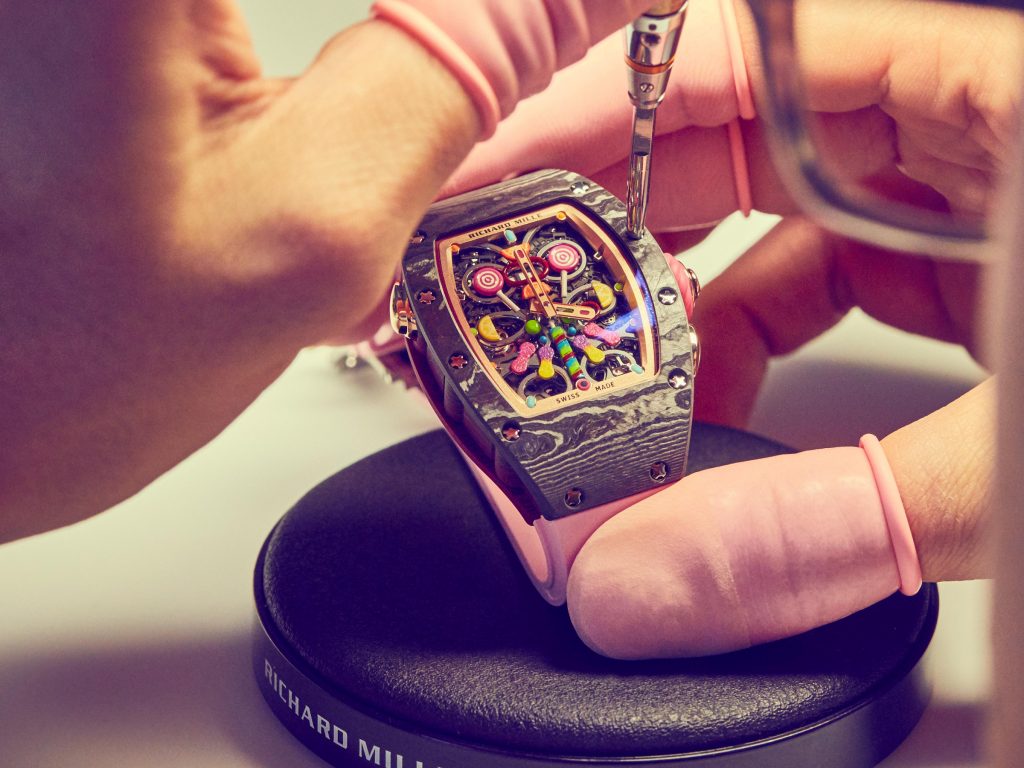Cartier’s Mystery Clocks Exhibition
19 time-telling art pieces with extraordinary history

A rare treat awaited guests of this year’s prestigious SIHH luxury watch trade show: 19 of Cartier‘s extraordinary Mystery Clocks. Hand-selected by Pascale Lepeu, curator of the Cartier Collection, these time-telling artworks were brought to life between 1912 and 1967 (though, production continues today). These were (and are) pieces made in very limited quantities—with rarity underscored by their quick global sales. In 1973, Cartier’s reacquisition of a Mystery Clock would lead to the birth of the Cartier Collection—a museum-worthy body of clocks, watches and jewelry now comprising 1,600 precious items. It makes sense that the Mystery Clock would initiate this cataloging. Inspired by the work of illusionist Jean Eugène Robert-Houdin, each clock—conceived by Louis Cartier and the Maison’s clockmaker, Maurice Coüet—sought to inspire wonder with technical merit and artistic advancement. During the private exhibition, the united force of these masterpieces revealed a particular magnificence at the crux of jewelry and clock-making.

From their introduction onward, the owners of Mystery Clocks have been as curious as the pieces themselves from time to time. The list includes everyone from royalty to Evalyn Walsh McLean, the last private owner of the Hope Diamond and buyer of the 94-carat Star of the East. The most recent acquisition by the Cartier Collection was of a single axel Model A, dating back to 1914. This piece, with a white agate base that houses the movement, belonged to Élisabeth, Countess Greffulhe—the famed Parisian salon hostess who inspired Marcel Proust’s character the Duchess de Guermantes in “À la recherche du temps perdu.” The exquisite piece, on display by Cartier for the first, captivates.
Another piece on display once belonged to Queen Olga of Greece. In the brand’s archive Lepeu explains, “We know that this clock was sold to Mrs Leads, who married a banker first and then, as a second marriage, she married the son of Queen Olga. She bought the model A, then had the monogram of an O applied and offered it to her mother in law.” As a Model A, it’s similar in style to the aforementioned, but demonstrates the stylistic variations incorporated.

The exhibition turned an ideological corner, featuring six pieces produced by the brand between 1923 and 1925. This was a period of art deco influence on the clocks. Further, at this time Europeans were drawn to Asian culture. With these combined forces, the clocks took on new life—in some instances adopting the form of a shrine gate and others actually integrating Chinese sculptures. Louis Cartier was quite the collector and would buy antiques from numerous inspiring cultures. One piece in particular, featuring a jade elephant, defined this decade’s stylistic pathway. “You have to imagine the sculpture as just the jade,” Lepeu continues, “without any decoration. Cartier brought this piece to his workshop and asked his designers to design a clock or an objet around the sculpture. All the cabochon and the pagoda were made at the Cartier workshop.”
There’s a reverence to these pieces, as well as curiosity. Of course, styles would change again—as evidenced in the work all the way to 1967. These pieces followed—or arguably declared—the fashion of the time. They employed the finest materials, both precious and exotic. For all their aesthetic value, however, these were cutting-edge clocks that aimed to conceal their beating hearts. And that required innovation and advancement, time and time again.
Images courtesy of Cartier












